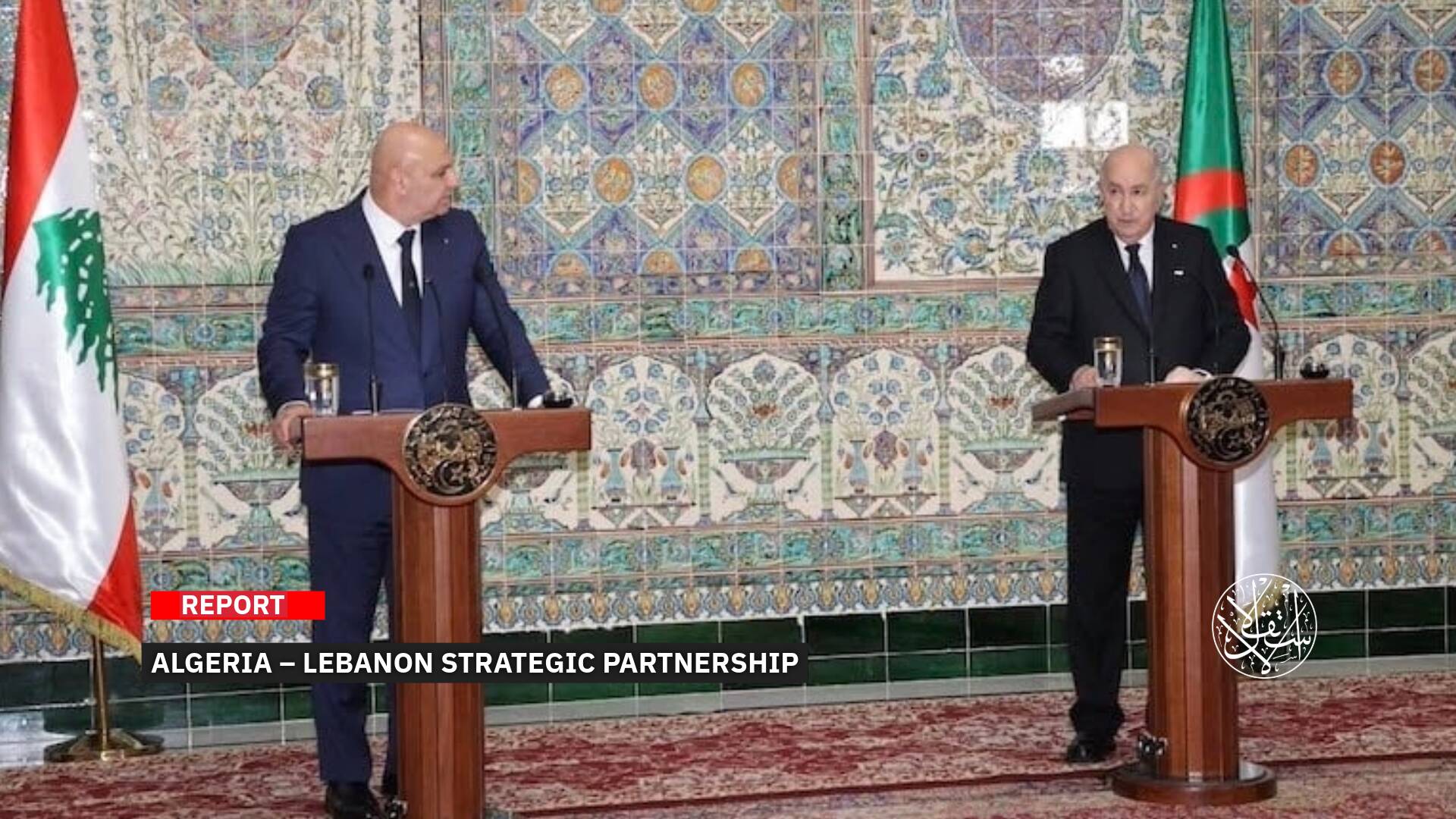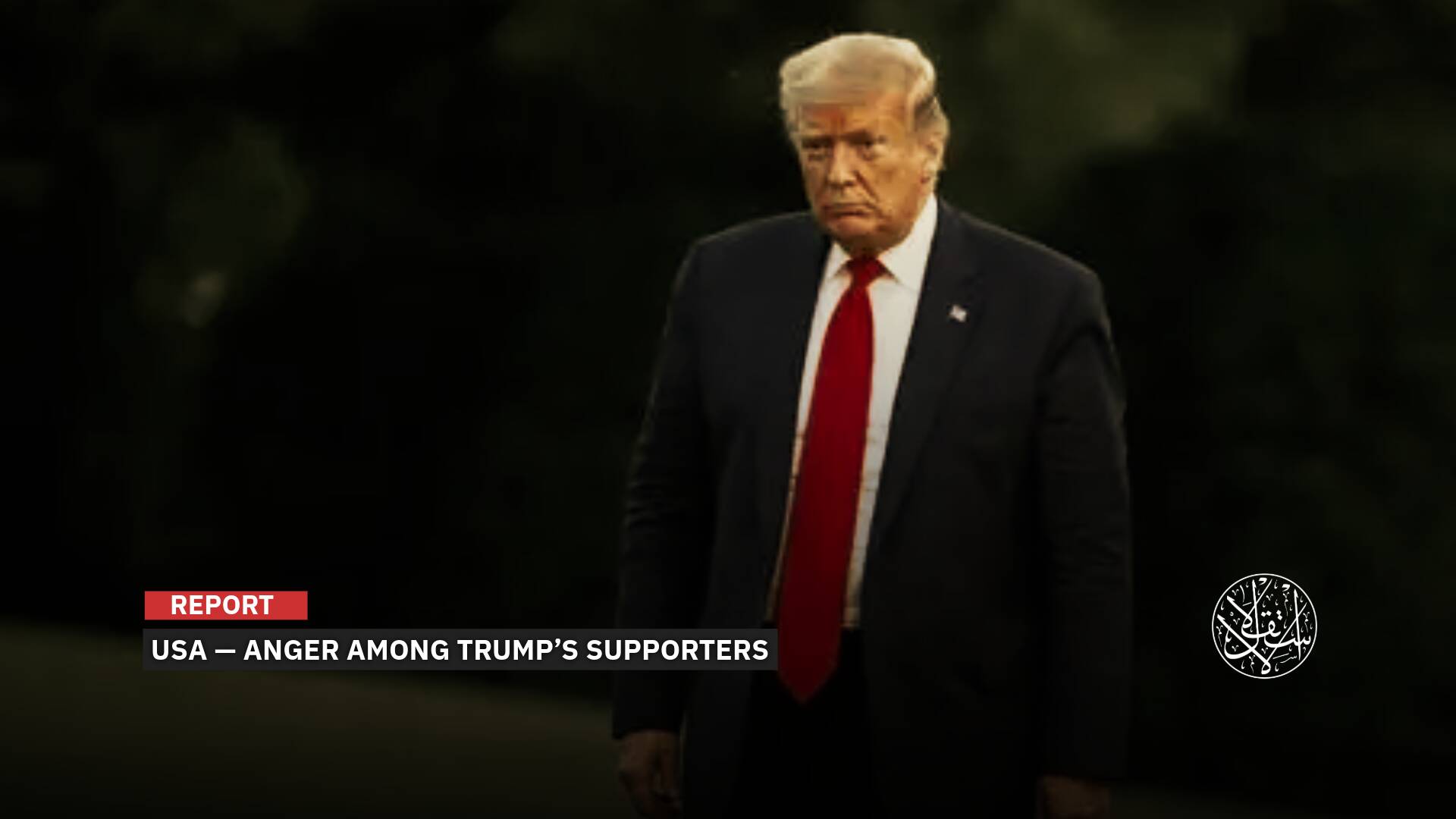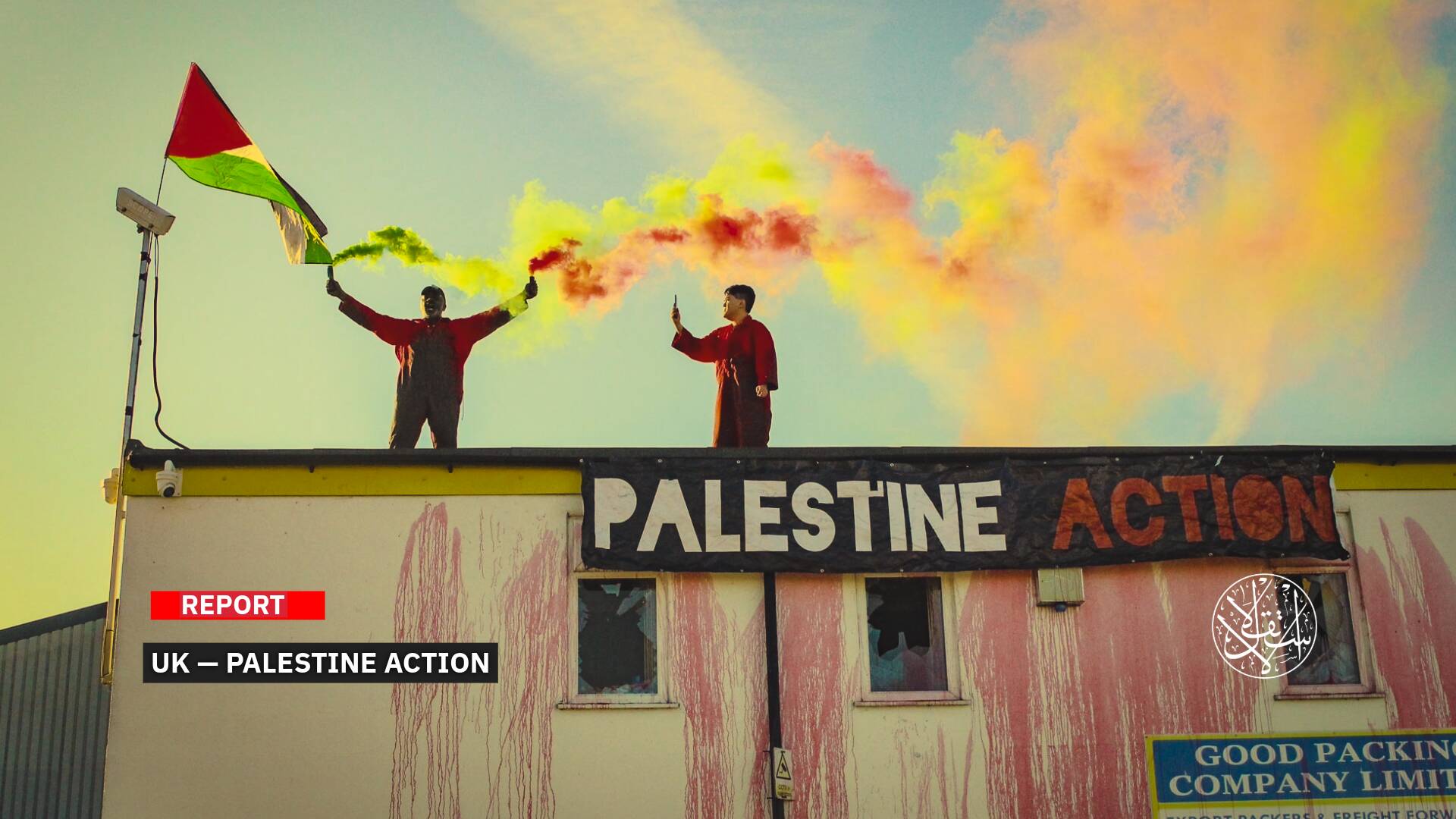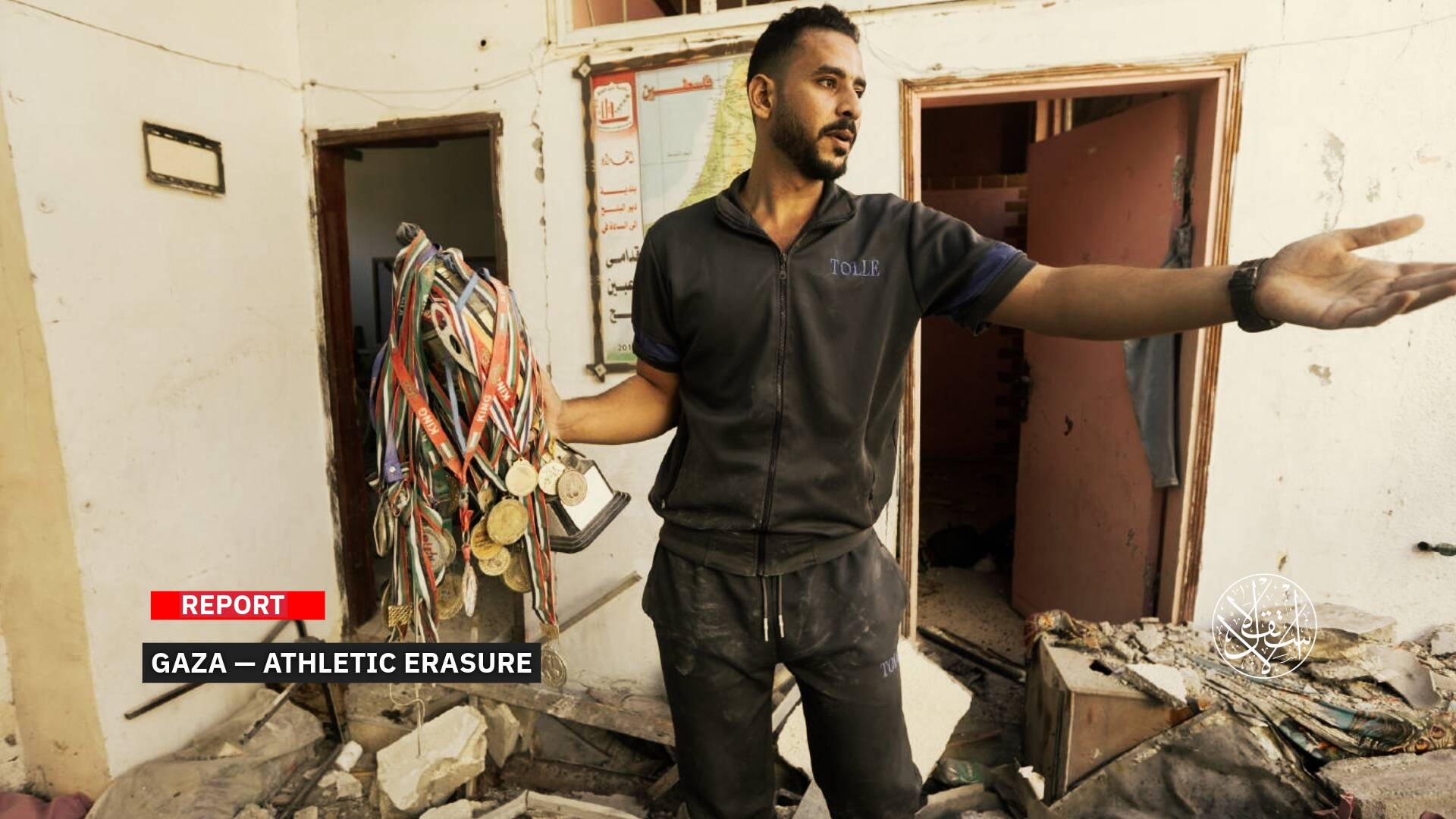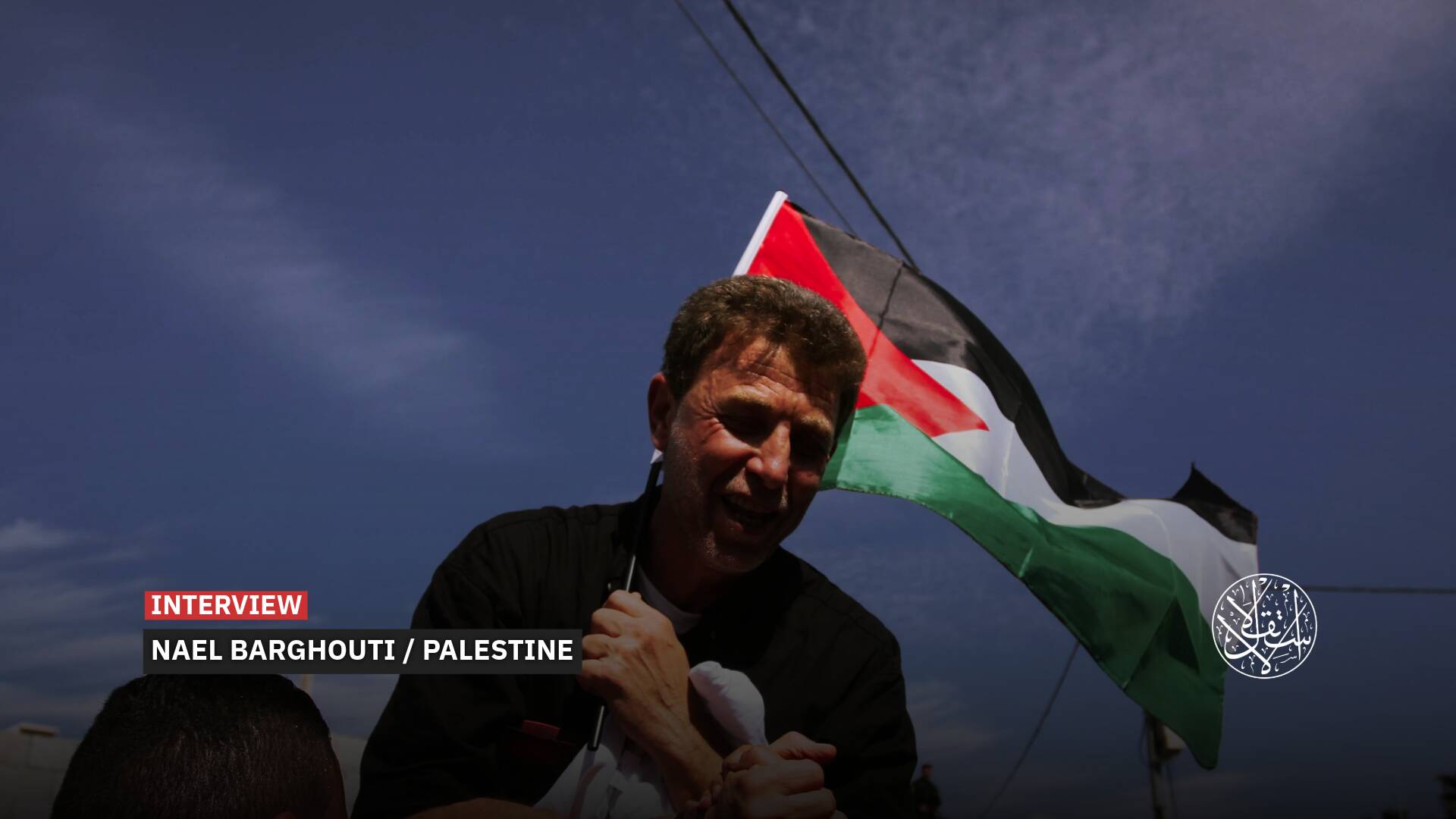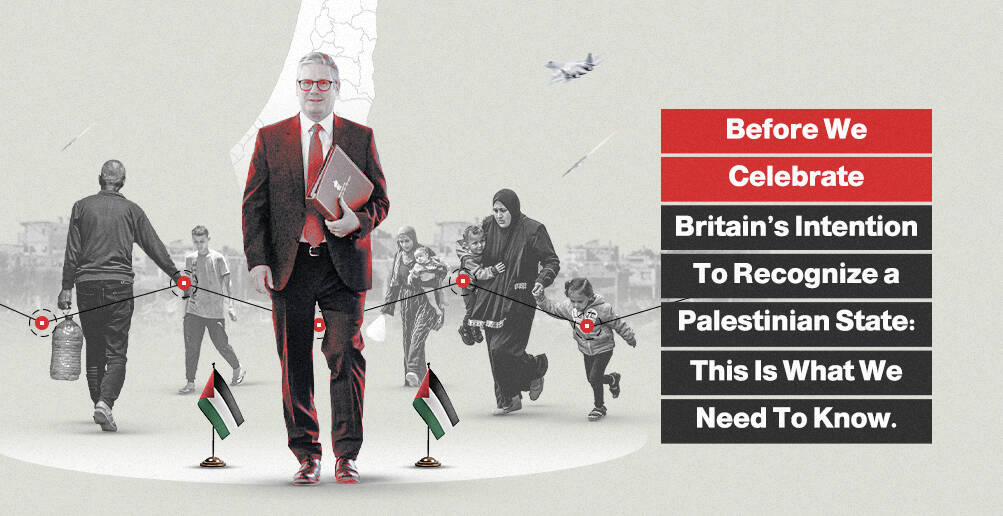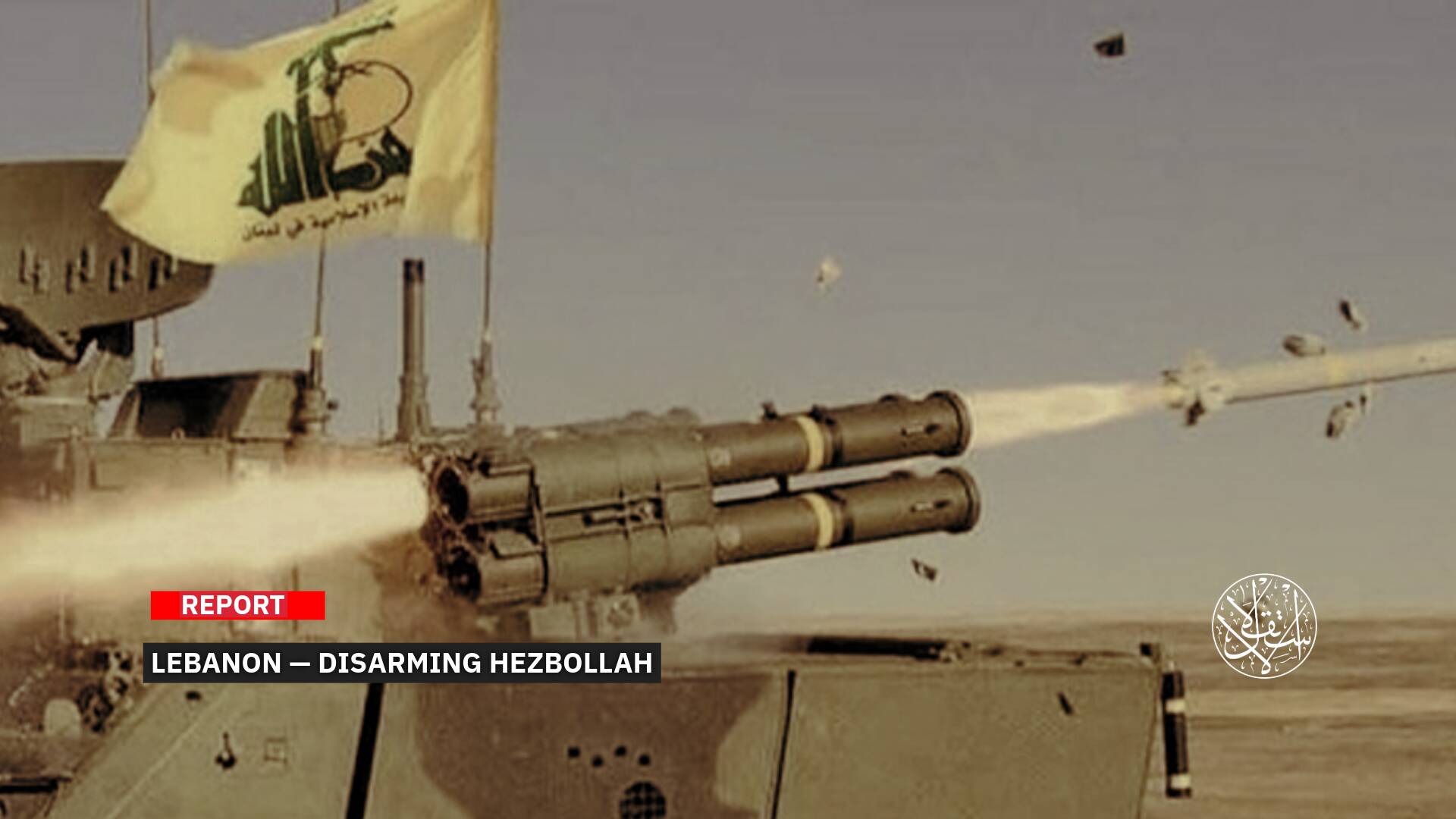How Israeli Occupation Attempts to Take Off Syrian Identity in the Occupied Golan Heights
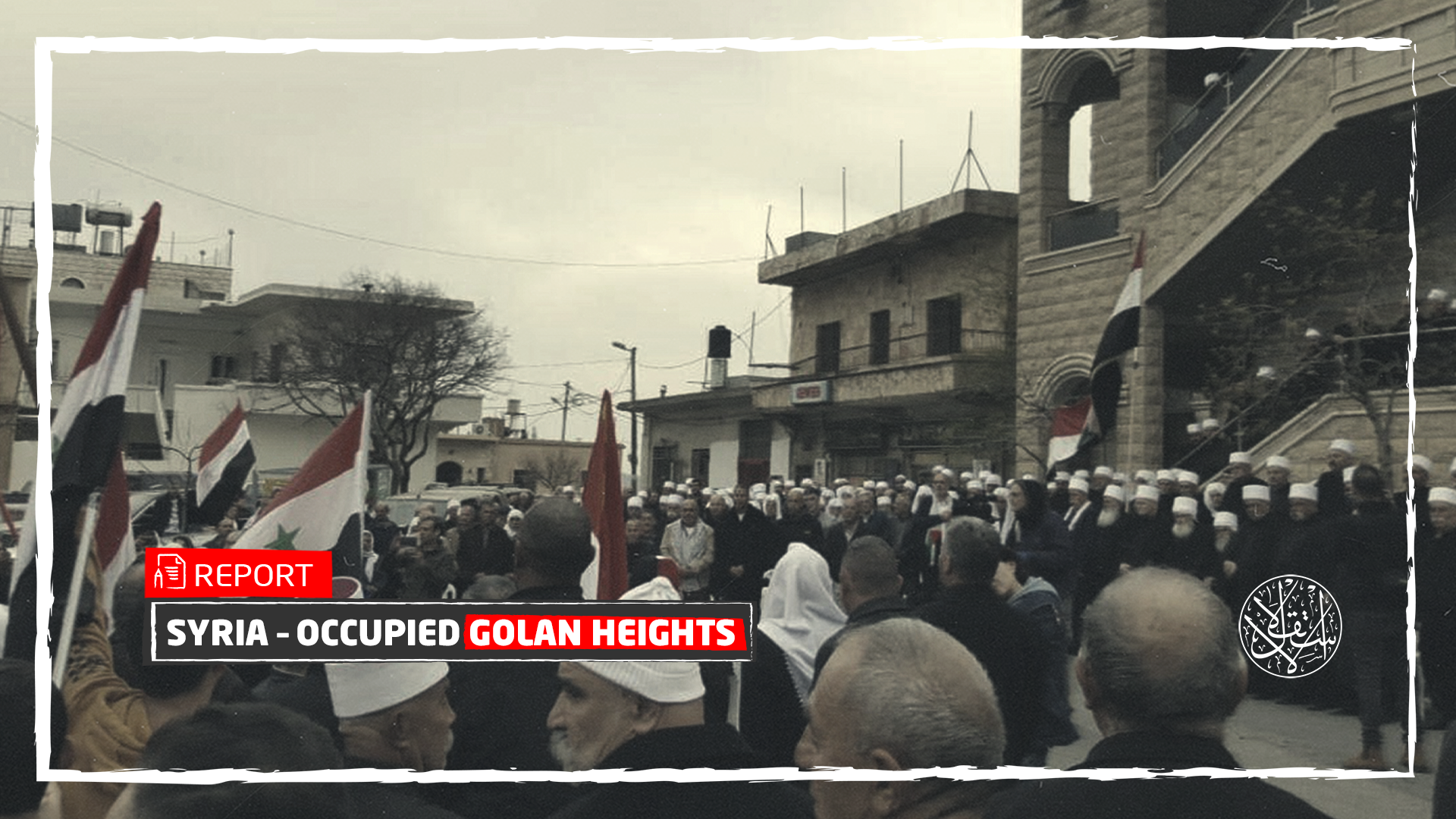
With unwavering determination, successive Israeli governments have sought to multiply the number of settlers in the occupied Syrian Golan Heights since 1967. This alarming trend poses a clear threat to the identity and culture of the original Syrian inhabitants.
The Israeli Occupation’s mobilization of settlers through various incentives suggests that these Syrians may become a minority in their own homeland, stripped of their geographical rights.
Plot to Rob Syrians
On June 21, 2023, hundreds of Druze villages in the occupied Golan Heights protested against Israeli plans to establish a wind power plant, resulting in an unusually violent confrontation with the police and several injuries.
Since 2019, the residents of the occupied Golan have been engaging in general strikes, sit-ins, demonstrations, and protests to resist Israeli turbine plans.
This scheme is one of the most dangerous colonial projects aimed at Judaizing the Golan, with Israeli forces attempting to push it forward under the guise of generating wind energy.
However, the true objective is to seize over six thousand dunams of their land, in violation of international agreements protecting peoples under Israeli Occupation and United Nations resolutions.
The response to the aggression by Israeli forces against the people of the Golan was swift. Hundreds of Druze individuals, whom “Israel” considers its citizens, closed roads in the Galilee region in solidarity with the Golan residents.
This move sounded the alarm within Netanyahu’s right-wing government, as some Druze individuals serve in the Israeli army. The Druze community feels humiliated by the “Nation-State” law, which they see as granting “Israel” exclusively to Jews.

A few days before the demonstration, a committee affiliated with the United Nations expressed its concern in a statement dated June 18, 2023, about the Israeli settlers in the occupied Syrian Golan exceeding the local population for the first time.
The United Nations committee, concerned with investigating Israeli practices affecting the human rights of the Palestinian people and other Arabs in the occupied territories, confirmed that Israeli policies and practices in the Golan isolate the population from their family and cultural ties in Syria and impose integration with the Israeli economy and education system due to lack of alternatives.
It revealed that “Israel” had sent a battalion known for its violent practices to the occupied Golan at the beginning of 2023 for a period of 11 months, explaining that this battalion had been subject to disciplinary action for negligence resulting in the death of Omar Abdel-Majid Asaad, a 78-year-old Palestinian American, in northern Ramallah in January 2022.
“Israel” has consistently refused to respond to the committee’s annual requests for consultations with Israeli authorities and has denied its members entry into “Israel,” the occupied Palestinian territories, or the occupied Syrian Golan.
In November 2022, the United Nations General Assembly adopted a resolution calling on “Israel” to end its occupation of the Syrian Golan, as well as another resolution affirming that Israeli settlements in the occupied territories, including East Jerusalem and the Golan, are illegal and constitute an obstacle to peace.
These two resolutions were adopted as part of the 77th session of the UN General Assembly by the Special Political and Decolonization Committee.
The resolution regarding the occupied Syrian Golan was supported by 148 countries, while 22 countries abstained from voting.
The United States, “Israel,” and Liberia objected to the resolution.
The Golan Heights Strategic Location
On June 5, 1967, “Israel” started a war against Egypt, Syria, and Jordan and occupied East Jerusalem, the West Bank, the Gaza Strip, part of the Syrian Golan Heights, and the Egyptian Sinai Peninsula.
The Golan Heights, located in southern Syria, about 50 kilometers from the capital Damascus, covers an area of over 1,860 square kilometers.
In 1981, the Israeli Knesset passed a law annexing the Golan Heights to “Israel,” but the international community still considers the area to be Syrian territory under occupation.
Since then, “Israel” has engaged in settlement activities in the region, and the remaining areas face the threat of Judaization.
The Golan originally consisted of 164 villages and 146 farms, of which “Israel” occupied 137 villages and 112 farms.
Currently, around 27,000 Israeli settlers live in 35 settlements in the occupied Golan Heights, in addition to 25,000 Syrians living in 6 villages.
Most of the Syrians in the Golan are from the Druze sect, along with Circassians, Turkmen, and Bedouins.
Before the occupation, about 138,000 people lived in Golan’s towns, but the majority fled to the Syrian interior.
“Israel” allowed those who remained in the Golan the option to obtain Israeli citizenship.
However, most of them chose to retain their Syrian citizenship and, in return, obtain permanent resident status that allows them to exercise most of the rights granted to Israeli citizens, except for voting in the Knesset and holding Israeli passports.
Since “Israel” occupied the Golan, it has canceled the Syrian civil identity held by the residents and forced them to carry military identification according to the regulations of the occupied civil areas.
The importance of the Golan stems from its ranking as the most fertile and naturally rich province in Syria, with available pastures year-round.
The Golan Heights holds paramount importance among the Syrian provinces due to its fertile soil, natural abundance, and year-round availability of pastures. It also benefits from water resources through rainfall and rivers.
Since then, the Israeli Occupation has actively sought to alter the geographical and demographic features of the Golan Heights.
It has established 35 settlements on the ruins of the villages it destroyed, currently housing approximately 30,000 settlers.
On August 27, 2014, the Israeli Occupation closed the Quneitra crossing, which served as the sole legitimate gateway for the people of the occupied Golan Heights to maintain contact with their homeland, Syria.
“Israel” has persistently worked, and continues to do so, on distorting the landmarks of the Golan Heights by changing the names of valleys, hills, villages, and springs. Simultaneously, they have made efforts to increase the number of settlers in the region.

Confronting Israeli Projects
Many Syrians in the occupied Golan Heights refuse to acquire residential apartments in the newly constructed settlements in order to preserve their original identity.
In contrast, “Israel” encourages its citizens to settle in the Golan Heights, especially those who work from home and value clean air, the environment, and quality of life.
All these movements gained momentum following former U.S. President Donald Trump’s recognition of Israeli sovereignty over the Golan Heights in 2019.
Trump saw this as the right moment for settlement activities, especially since President Joe Biden’s administration clarified that there would be no change in its policy.
In response, “Israel” established a new settlement in the Golan Heights called Trump Heights in 2020, which accepts permanent housing requests from thousands of settlers.
Former Israeli Prime Minister Naftali Bennett’s government voted at the end of 2021 in favor of a $317 million plan to double the Jewish settler population in the occupied Golan Heights.
The plan aims to build 7,300 housing units for settlers in the region over a period of five years, as discussed during a meeting held in the Mevo Hama agricultural community in the Golan.
The new Israeli Prime Minister, Benjamin Netanyahu, attempted to extract new acknowledgments of the Israeli Occupation’s alleged sovereignty over the Golan Heights, using its “security vitality” as a gateway to Israeli interests.
This move was part of Netanyahu’s commitments to his far-right and religious party allies before forming the most extremist government.
A day before the new government’s inauguration to the Knesset on December 29, 2022, Netanyahu published the guiding principles and comprehensive agenda of his coalition.
One of the last clauses stated that the government would “work towards recognizing the Golan Heights as a strategic area with vast developmental potential, leading a wave of settlement and development while preserving the unique values of the plateau, represented by its nature, humanity, and environment.”

Threatened Generation Identity
It is noteworthy that increasing the number of settlers in the Golan Heights no longer directly affects the Syrian population. Land confiscation has already been completed since the beginning of the occupation. However, it may impact the identity of the local inhabitants living in the lands occupied by “Israel.”
In this context, Hani Zahwa, a Syrian university student from the village of Buq’ata in the Golan Heights, affirms that his generation faces an identity crisis and a process of “Israelization,” which means an attempt to persuade them to adopt Israeli values and culture, as he told Agence France-Presse at the end of December 2021.
The young man believes that the division within his Druze community regarding the events in Syria, ongoing since 2011, provided an opportunity for Israel to influence the identity of the younger generation.
In recent years, many of Zahwa’s peers with whom he grew up chose to become Israeli citizens, which contradicts a long-standing tradition in their community that believes in the necessity of preserving Syrian national identity.
Zahwa points out that “Israel plays on the sectarian chord” by emphasizing the religious aspect of his Druze sect while neutralizing its national identity by comparing it to the Druze community within “Israel.”
Syrian citizens in the Golan Heights adhere to a document adopted in 1981 that denounces anyone who exchanges their Syrian nationality for Israeli citizenship. It forbids engaging with the Israeli Occupation, participating in its celebrations or ceremonies, or intermarrying with its members until they acknowledge their guilt and repent for their mistake if committed.
To this day, there are no local council elections in the occupied villages, which is a clear expression of refusal to legitimize any Israeli institution.
On October 30, 2018, Golan Heights residents staged a sit-in in the town of Majdal Shams, rejecting the so-called “local council elections” and preventing the occupation authorities from conducting them. They burned the election cards.
In the occupied Golan Heights’ Katzrin settlement, excavations are underway in preparation for building a new neighborhood for middle-class families, following the approval of the Israeli government’s $317 million plan to double the population of the area.
The mayor of the settlement, Dmitry Apartzev, who welcomed the government’s plan, says, “Within 20 to 30 years, the population of Katzrin will increase from nine thousand to around 50 or 60 thousand.”
According to the announced plan, over 10,000 new housing units will be built, with approximately one-third of them in Katzrin.
It is worth mentioning that Syria attempted to regain the Golan Heights in the 1973 war before a ceasefire agreement was signed with “Israel” in 1974, and an international monitoring force was deployed along the ceasefire line in that year.
Sources
- United Nations: For the first time, there are more Israelis than Syrians in the occupied Golan [Arabic]
- The Israeli government approves a plan to double the number of settlers in the occupied Golan [Arabic]
- The occupied Syrian Golan: History and Facts [Arabic]
- The Israeli Occupation closes a number of the main entrances to the villages of the Golan [Arabic]


